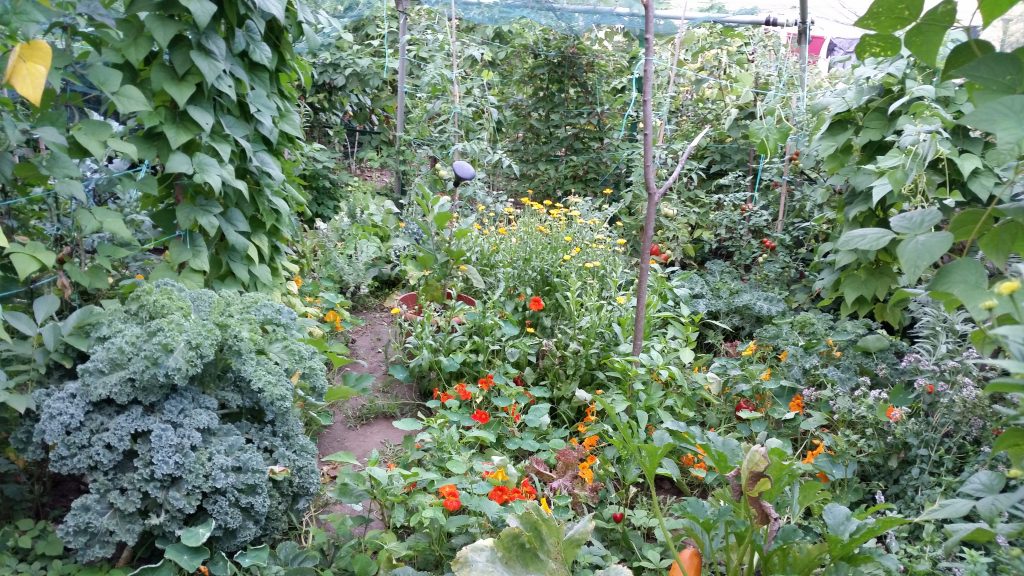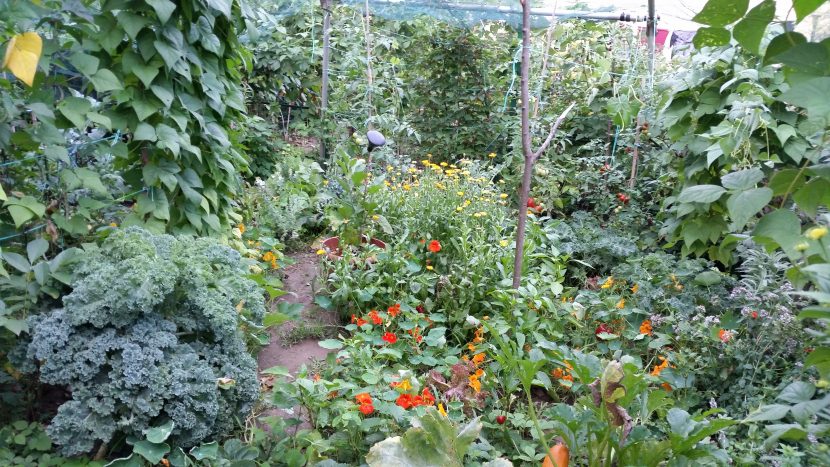Creating an unpleasant environment for pest and disease includes using fertilizers modestly (either with natural or artificial fertilizers), maintaining the proper pH of the soil and intercropping. To prevent is better than to heal. Take care of your garden and create an unpleasant environment for pest and disease, and make your crops safe.
Intercropping is the cultivation of two or more crops simultaneously on the same field. The crops may be seeded at the same time (mixed intercropping) or they may be seeded after the first one has completed its development (relay intercropping)
Intercropping makes the garden slightly more difficult to cultivate, as not all plants of the same vegetable are in one place, but it brings many benefits:
- Some species of vegetables and flowers repel insects or disease from their neighbors
- Many pests don’t see that well and don’t find individual crops
- Diseases don’t spread to other crops as easily
- Even crops have their friends and foes, and facilitate or hinder each other’s growth
- When combining the fast growing crops with the ones that grow slowly, we avoid having spots of bare soil
- During summer high growing crops give shadow to the low growing ones
- Legumes help crops that need extra oxygen.

Useful crops combinations:
- Basil against flies, mosquitoes, leaf lice, moths, grey mold,
- Mint against flea beetles, ants, lice, cabbage root fly and other flies
- Lavender against lice, ants and mice
- Garlic against lice, snout beetles, mites, peronospora, thrips, potato and grey mold, snails, voles, bacteria
- Onion against peronospora, mold, lice, mites, snails
- Horseradish against Colorado beetles, monilinia, leaf lice, botrytis
- Marigolds against ground pests, fungi, lice, some types of weed (bindweed)
- Indian cress against lice, leaf beetles, ground pests, fungi, snails
- Calendula against lice, ground pests, fungi, snails, Colorado beetles
- Savory against lice
- Wormwood against rust, lice, snails, mites, ants, caterpillars
- Sage against mold and pests
- Chamomile against mold and damping-off
- Rhubarb against onion flies, carrot flies, leek moths, caterpillars and as a general repellent
- Celery against caterpillars
- Tomatoes against caterpillars, pea moth and flea beetles
- Carrots against onion flies
Some great companions for intercropping:
- Pole beans, corn, sunflowers and squash
- Basil with squash and radicchio
- Savory, thyme and sage with pole and bush beans
- Garlic with strawberries
- Chamomile, calendula, Indian cress and sage with brassica vegetables
- Marigolds, calendula, Indian cress or horseradish with potatoes
- Tomato with peas
- Carrots with leek or onion
Garden requires flowers as well, as they attract beneficial insects that eat lice, and repel some pests. However, plant mint and horseradish to pots and not directly to the garden as they become very annoying weeds as well.
When you plan your garden according to good and bad companions, you can also use the our garden planner for help.


